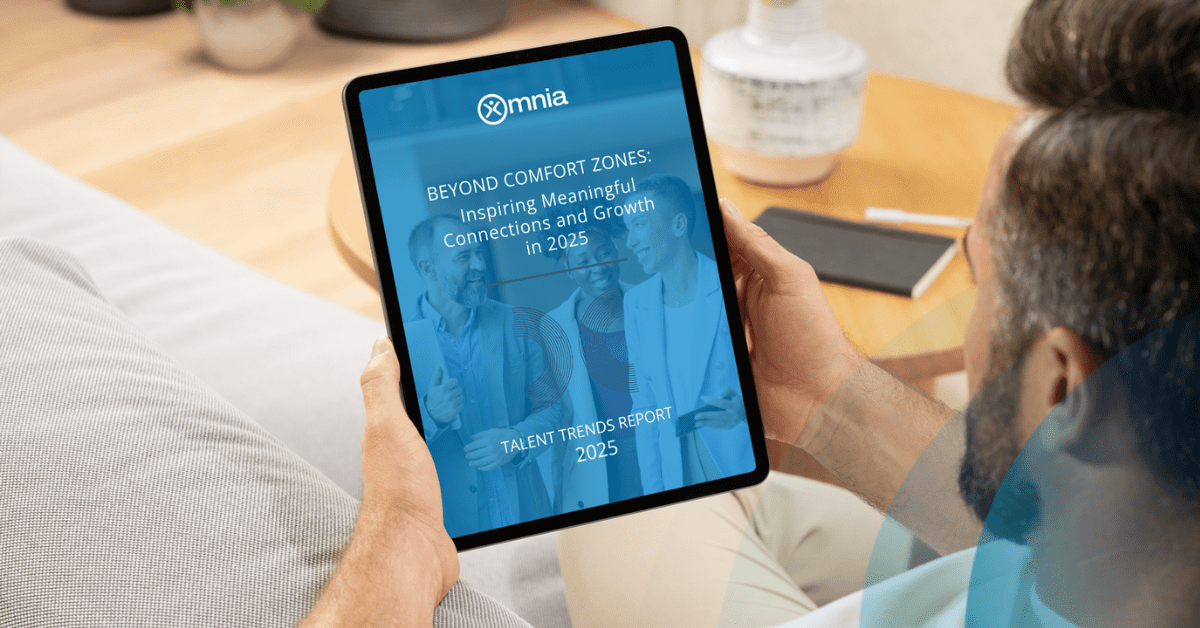If these last few years have taught us anything, it’s that change is a constant. I can’t count the number of “new normals” we’ve had to adjust to — then readjust to make way for a newer normal. Even before the year that shall not be named, change has always been a perpetual part of life, including in the business world. For companies to prosper, they need to keep pace with what’s coming over the horizon. That means their employees do too.
Despite the frequency with which we all must deal with alterations (or downright overhauls) to our usual way of doing things, that familiarity doesn’t necessarily make it easier to adapt. After all, change requires people to move out of a safe, familiar haven into potentially risky, uncharted territory. And it’s more challenging for some of us than others. For example, ambitious changes may make security-driven individuals (those who exhibit a tall column 2 on The Omnia Behavioral Assessment) feel unsure and vulnerable.
Whether it’s something as minor as revising the company’s personal leave policy or as major as changing the business model from in office to fully remote, organizations often face some employee resistance. But using personality insights can offer you a roadmap outlining the best ways to help your team traverse the rocky terrain of change.
Here are 5 tips to minimize employee fear and pushback and encourage your staff to embrace change within your company, all with the help of personality insights.
1. Give ample advance notice.
As mentioned previously, some people find it difficult to adjust to shifts in processes, technologies, or leadership within the organization. Cautious individuals (tall column 2) can feel overwhelmed if a change seems risky, and people who thrive with predictability (tall column 6) often feel thrown for a loop by abrupt modifications to their job. Even employees who are ambitious and comfortable with risk (column 1) or who are quickly adaptable and enjoy variety within their roles (tall column 5) appreciate receiving a heads-up about what’s coming down the pike. So, let your staff know as far in advance as possible of potential changes that could affect their plans, job descriptions, workloads, or schedules. This gives them time to accept the upcoming changes and prepare to accommodate them.
2. Explain the reasoning behind the changes.
Clarify for employees why changes are being made, who will be affected, and how they can benefit everyone. Also, allow them to ask questions, and be transparent and thoughtful with your answers. This is especially helpful for fact-driven, analytical thinkers (tall column 4). These individuals are naturally skeptical and want to know the specifics about the changes being made. For staff who are more emotionally driven (tall column 3), discussing the changes in an upbeat, enthusiastic way can help get them excited for the transition. For all employees, introducing change in a positive light can help prevent apprehension or resistance.
3. Give thorough training on any major changes in operating procedures.
Highly structured staff members (tall column 8) will want step-by-step guidance on how to perform new processes correctly. Receiving thorough training and having new practices documented so they can refer back as needed can help bolster their comfort with implementing the new procedures into their departments and roles.
Routine-oriented employees (tall column 6) are most efficient and comfortable when they can follow consistent regimens within their jobs, but being required to change up their routines can cause them to become flustered. Coach them on how to incorporate new procedures into their preferred everyday work systems. When possible, allow them to make modifications over a period of time, instead of all at once, so they have time to adjust.
4. Ask for staff input before deciding on changes.
Solicit employee feedback when you recognize an area that needs improvement. You may discover that your staff members have some innovative ideas, and you may also find that asking for such input can boost team morale and employee engagement. This is especially true for employees who want to have a say in how they perform their jobs (tall column 7).
Granted, not all changes are up for group discussion, and some suggestions may not be realistic or feasible to put into effect. But asking for (and acting on) employee recommendations when possible can make staff feel invested in the resulting changes and increase their determination to see them implemented successfully.
5. Follow up and offer praise.
After the changes have been made, check back with your employees to see how they are adjusting. For any staff members who have encountered difficulties or setbacks, work with them to develop strategies to resolve those issues. Additionally, applaud the employees who have been exemplary in applying the changes within their jobs as well as those who have helped others acclimate smoothly. Socially outgoing people (tall column 3) appreciate public praise, such as being recognized in a meeting. Reserved individuals (tall column 4), who do not like the spotlight, might prefer being recognized in a group email that details the specifics of how they went above and beyond.
While change is a constant, it doesn’t have to be a constant frustration. The first step is using personality insights to understand your employees and the best ways to coach them through transitions. Omnia is here to help! Using our fast, easy, incredibly accurate behavioral assessment is an easy change to incorporate within your organization — one that will have a positive, long-lasting impact on your business and your team. Contact us today to get started!























